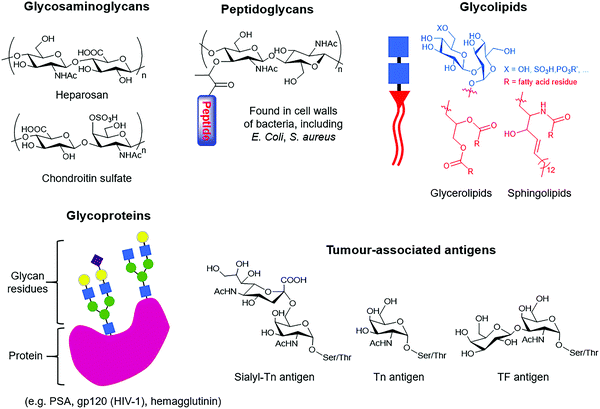 Open Access Article
Open Access ArticleCreative Commons Attribution 3.0 Unported Licence
Correction: The challenges of glycan recognition with natural and artificial receptors
Stefano
Tommasone
a,
Francia
Allabush
a,
Yazmin K.
Tagger
a,
Joshua
Norman
a,
Monika
Köpf
a,
James H. R.
Tucker
b and
Paula M.
Mendes
*a
aSchool of Chemical Engineering, University of Birmingham, Edgbaston, Birmingham, B15 2TT, UK. E-mail: p.m.mendes@bham.ac.uk
bSchool of Chemistry, University of Birmingham, Edgbaston, Birmingham, B15 2TT, UK
First published on 18th December 2019
Abstract
Correction for ‘The challenges of glycan recognition with natural and artificial receptors’ by Stefano Tommasone et al., Chem. Soc. Rev., 2019, 48, 5488–5505.
The authors regret that incorrect structures for heparosan, chondroitin sulfate and peptidoglycans were included in Fig. 1 of the original article. The correct structures are included in the corrected version of Fig. 1 below.
The Royal Society of Chemistry apologises for these errors and any consequent inconvenience to authors and readers.
| This journal is © The Royal Society of Chemistry 2020 |

